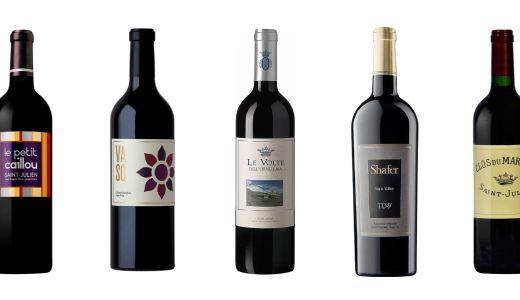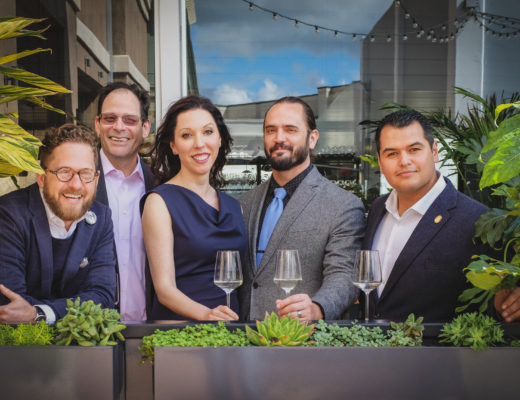Drinking wine is easy.
Communicating about it, not so much.
It doesn’t matter how experienced you are. If you’re new to wine, the terminology can be tricky. If you’re a pro, the language can spiral off into what sounds like nonsense. Either way, it feels ridiculous and confusing… and usually leads to a less-than-stellar recommendation. We’re here to make it easier than ever to pick the perfect wine for yourself, and your friends and family. Consider this Google Translate for wine-speak.
We’ve translated the most commonly used wine phrases, so you can shop for anyone with confidence and ease. Better yet, use our definitions to make sure you get the right wine, every time.
“I don’t like wines that are too sweet!”
It’s easy to confuse sweetness (the presence of residual sugar) with intense, ripe fruit flavors. The reality is that the vast majority of table wine is dry in style (meaning there is no perceptible sugar), but some wines from warmer climates can give the impression of sweetness because their fruit aromas and flavor are very ripe.
If you’re buying for someone who doesn’t like wines that are “too sweet,” look for bottles that are less fruity, and have tasting notes with words like “crisp,” “mineral,” or “fresh.”
TRY: 2019 Grosset Wines Springvale Riesling Clare Valley
If you prefer riper styles, try asking for a “fruity but dry,” wine. And if you enjoy your wines with actual sweetness, ask for an “off-dry wine,” “medium sweet,” or “highly sweet wine” depending on the intensity of your sweet tooth.
TRY: 2018 Grawlix Sauvignon Blanc Dry Creek Valley Sonoma County
“Why would I want to taste freshly tilled earth (or leather, mushrooms etc.) in my wine?”
Dried fruit, dried floral, leather, tobacco, mushroom, truffle, licorice, damp earth, and forest floor appear in many wines, depending on the grape variety and the age of the bottle. These secondary and tertiary nuances are prized in expensive wines, which is why they are common in long, poetic tasting notes.
If you are turned off by these descriptors, try asking for wine from a recent vintage or one which will have more “primary fruit.” If these earthy and obscure notes sound intriguing, ask for wine with more “development,” or perhaps a “library vintage,” which indicates the wine will have more non-fruit aromas and flavors.
The Science from VP of Wine Robert Emery: As wine ages, a number of slow, complex chemical reactions take place that produce a range of aromas and flavors often described as either the wine’s “bouquet” or “tertiary character” in Wine Speak. Not everyone likes wine with tertiary notes, but for many of us it’s the complexity they add to a wine that makes it worth aging.
TRY: 2015 Clos de L’Oratoire Saint Emilion Grand Cru
“I don’t like oaky wines.”
Oak is one of the most commonly misunderstood elements of winemaking which is why it often leads to a disappointing wine recommendation. In essence, oak fermentation or maturation imparts a wide variety of aromas and flavors to a wine. These range from less oaky (aromas of cedar, allspice, and clove), to moderately oaky (baking spice, vanilla, nutmeg, and cinnamon), to heavily oaked (vanilla extract, toast, espresso, and chocolate).
There is no way to know how oaky a wine is from the packaging, which is why it’s important to consult someone you trust that has had the wine before, or look for descriptors of the wine that align with a lightly, medium,or heavily oaked wine. Oak doesn’t always express itself overtly in wine, but can be subtle—even if you’re buying for someone who proclaims to hate oak, they may enjoy some light oak influences (like a hint of vanilla in an excellent Chardonnay).
Pro-tip from Master of Wine Vanessa Conlin: If you’re not sure how you feel about oak, it’s easy to explore. Try asking for a Napa Cabernet Sauvignon or a Rioja Reserva, both which often display a high intensity of oak characteristics. And if you want to play it safe for someone who says they don’t like oaky wines, look for bottles aged in stainless steel like Italian Pinot Grigio or New Zealand Sauvignon Blanc, or reds from Beaujolais or the Côtes du Rhône.
TRY: 2018 Charly Thevenet Régnié Grain et Granit Beaujolais
TRY: 2017 Rudd Estate Crossroads Cabernet Sauvignon Oakville
“I like red wines that aren’t too bitter.”
In red wine, tannin is often confused with bitterness or “bite,” because tannins are what give you the puckering sensation caused by red wines. The more tannin in the red wine, the more it will grab onto your tongue, and make your mouth feel dry. Sometimes, this can seem like bitterness.
For this reason, tannin is usually described in terms of texture. If you don’t like that feeling of grip, ask for a wine with a “softer” or “plusher” texture to the tannins. If you crave a wine that feels highly structured on your palate, ask for a wine that is “grippy” or “firm.” Somewhere in between, “polished” or “fine” will express a moderate amount of tannin.
The Science from VP of Wine Robert Emery: Let us get all scientific for a minute! Tannin is a complex molecule (technically, a phenolic compound) that is one of the building blocks of plant material. Tannins are highly reactive to proteins and literally attach to the proteins on your tongue which is why your mouth sometimes feels dry when drinking red wines (much like the feeling when enjoying a strong cup of black tea).
Red wine gets its tannin, as well as it’s color, from fermenting the wine on the grape skins. It’s a little complicated, but in general the longer the wine is on the skins, and the thicker the skins naturally are (which varies by grape variety) the more tannic the red wine. Cabernet Sauvignon, Syrah, Petite Sirah, and Nebbiolo all naturally have very high tannins. Merlot, Zinfandel, Grenache, Sangiovese have more moderate tannins. Gamay and most Pinot Noir have fewer tannins.
“I want a good Cabernet Sauvignon to go with my steak”
Talk to any good sommelier at a steakhouse, and they’ll tell you that the majority of their customers come in asking for a good Cabernet Sauvignon to go with their steak because Cabernet and steak is a classic pairing.
But when pressed for further details, many Cabernet aficionados describe their ideal wine as “plush tannins, full bodied, with a rich core of ripe fruit,” or a “smoky, spicy red.” While there are a handful of Cabernets that fit this description, it much more accurately describes a different wine, Syrah—a personal favorite of ours. Next time, grab a Syrah (or its Australian twin, Shiraz), and impress whoever you share it with.
Perfect Pairing from CEO Joe Fisch: I was amazed when I came to Wine Access and discovered all of our Wine Team had cellars stocked deep with Syrah. Then, I got hooked after a few team dinners. Throw a ribeye on the grill and grab a bottle from the Northern Rhône, and join me in being a Syrah convert.
TRY: 2014 Favia Rompecabezas Red Wine
“I like toasty Champagne.”
Champagne and other sparkling wines get their bakery-like aromas and richness from aging on the yeast cells that give these wines their signature bubbles. Extended aging increases these toasty, biscuity notes while wines with less aging will have more lean, crisp, notes on the nose and palate.
If you love that bakery element (or are shopping for someone who does) look for a Champagne or bubbly with “extended lees aging,” or phrases like “rich,” “brioche,” or “toast” in the tasting note.
TRY: 2013 Ferrari Perle Metodo Classico Trento DOC
If lean, mean, and mineral sparkling wines are what you’re hunting for ask for bottles with “zero dosage,” or marked as “austere,” “focused,” or “linear.” Most inexpensive bubbly, like Cava or Prosecco is made in this fresh, citrus-driven style.
TRY: NV Langlois-Chateau Cremant de Loire Brut Loire Valley
The Science from VP of Wine Robert Emery: Traditional method sparkling wines are aged in contact with the yeast used in the second fermentation process (what we call lees in the biz). The amount of time spent in contact with the yeast affects the intensity of aromas of biscuit, brioche, or bread dough that can add to the overall complexity of the sparkling wine. It also adds to the perceived body of the wine.
“I don’t like buttery Chardonnay.”
Chardonnay is a chameleon-like grape variety. It’s naturally malleable, which means it can make wines that are light, crisp, and bright or round, rich, and decadent. In fact, the buttery or creamy texture has nothing to do with Chardonnay itself, but with the fermentation and aging techniques used by each winemaker.
A natural fermentation process called “malolactic fermentation” softens the acidity in Chardonnay, while oak aging often helps add the richness and “buttery” or “popcorn” signature of New World Chardonnay. If that’s a flavor profile you love, ask for “rich,” “round,” or “oak-aged,” Chardonnay.
TRY: 2016 Grgich Hills Estate Chardonnay Estate Grown Napa Valley
If you’d rather steer clear of buttery, luxurious whites don’t write off Chardonnay (which yields some of the most wonderful, lean wines on planet Earth). Ask for Chardonnay that has no malolactic fermentation (ML for short), or is aged in stainless steel. If you’re shopping for a friend, look for tasting notes that mention “crisp,” “clean,” or “bright” expressions without oak.
These aren’t techniques you can identify by anything on the label, so when in doubt ask!
The Science with VP of Wine Robert Emery: Wine is naturally high in acid, and this is a good thing, especially in white wine. It is the acidity in wine that gives it the refreshing backbone that makes your mouth water, and prepares you for another sip.
But some people don’t like their white wine too high in acid, preferring a fleshier, softer, and rounder expression to the lean, steely, and taut nature of high acid whites. To achieve this, winemakers can use a technique called malolactic fermentation (also called malolactic conversion, or “ML” for short), which converts the leaner, steelier malic acid naturally present in wine grapes (the primary acid in green apples) into a softer, fleshier lactic acid (the primary acid in dairy—hence “buttery”).
Chemistry lesson aside, if you like a leaner, more tightly focused mouthfeel, you can ask for a white with “no ML.” If you like the rich, buttery mouthfeel, then mention “full ML.” Like a little bit of it? “Partial ML” is definitely a thing, and will help you find a Chardonnay or white with a little kiss of butter.
Hopefully, this missive arms you with the sommelier secrets and pro-tips you need to navigate common wine phrasing that’s anything but common sense. From “mineral” (read: wines that smell like a summer rain) to “floral whites” (not floral like dish soap, floral like a bouquet) we’re here to help.
You can reach us any time at Help@wineaccess.com, and we’ll decode even the most challenging request. As one member put it, we’re “Better than Nordstrom” at customer service. At Wine Access, tailoring an order to your tastes is always on us.





